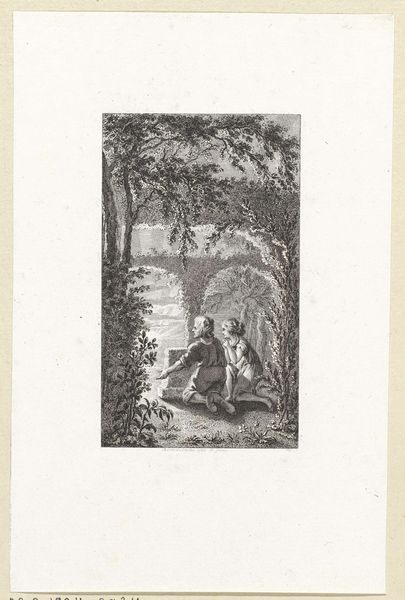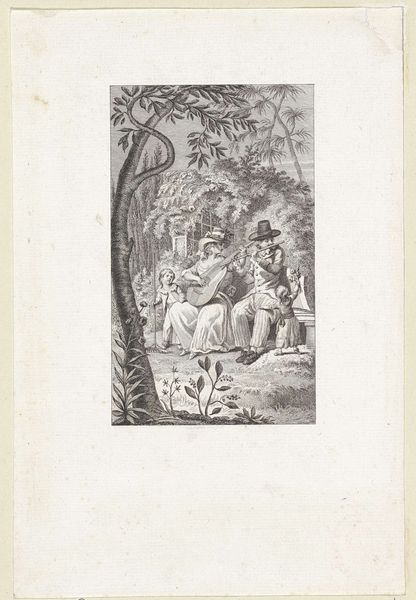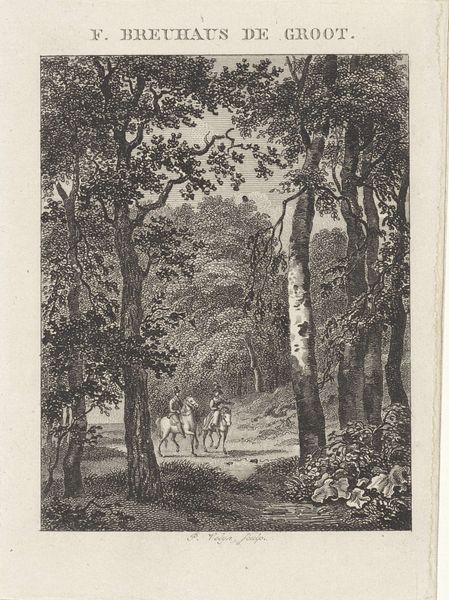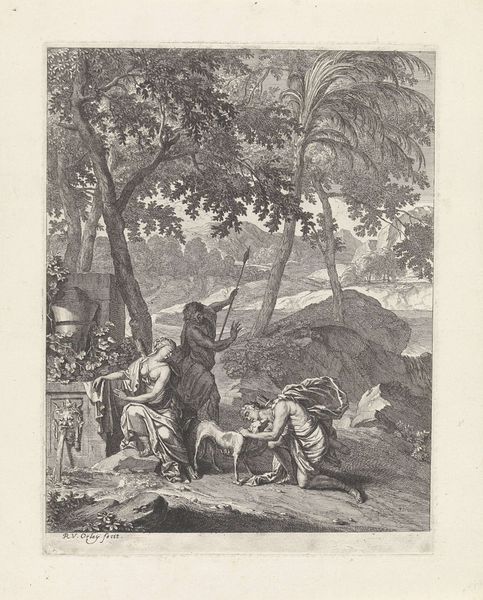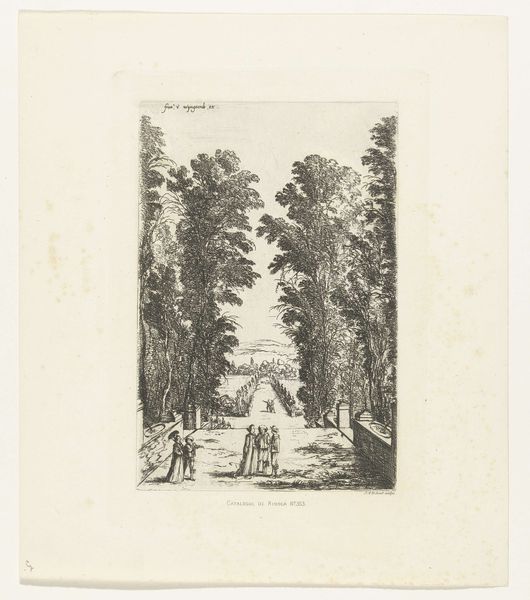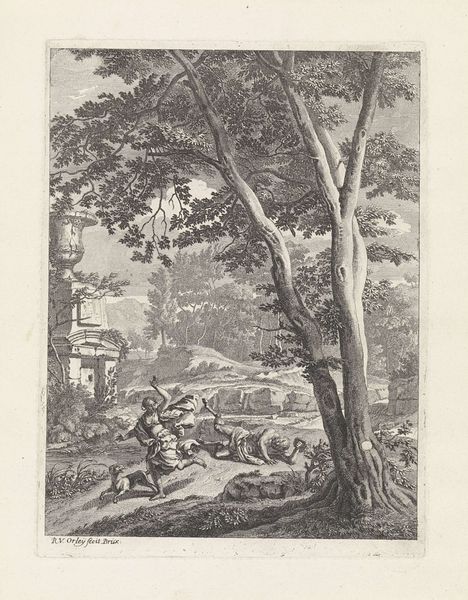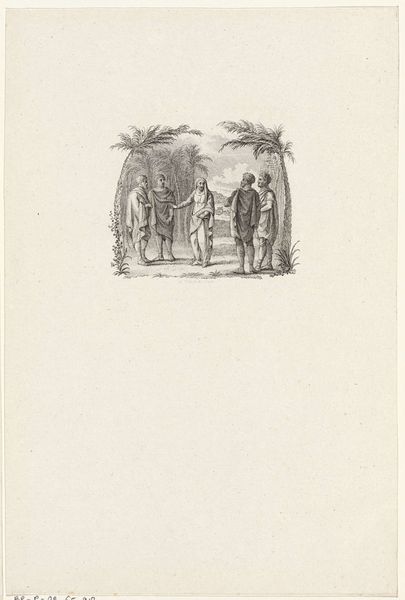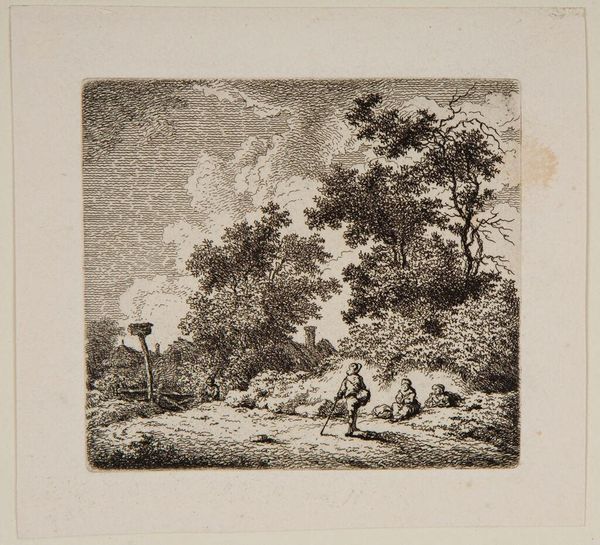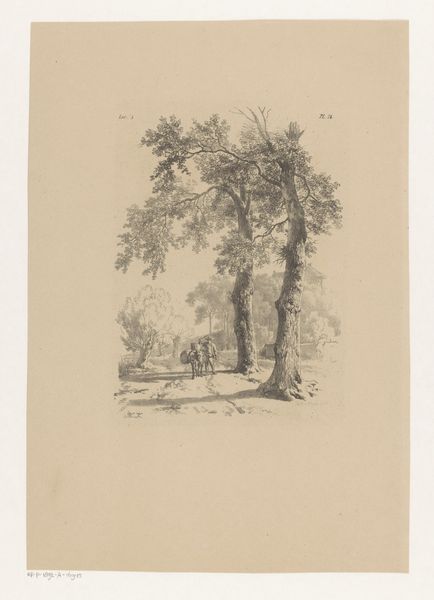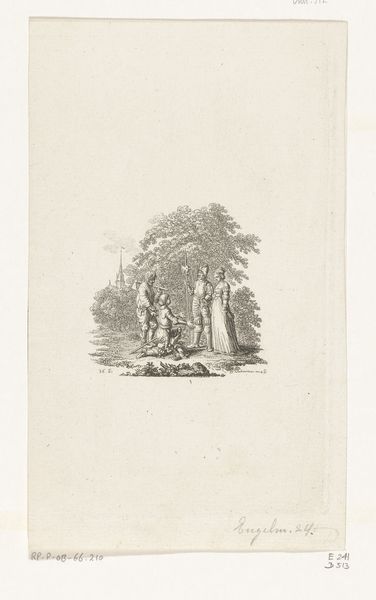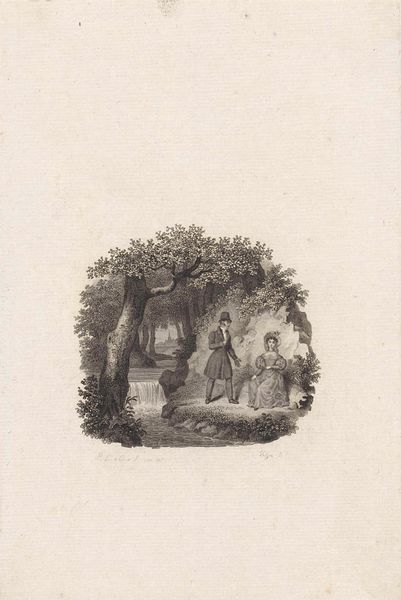
Edwin Bligh Reads from the Bible to Enslaved African Americans in a Forest in Mississippi c. 1836s - 1846s
0:00
0:00
print, engraving
#
narrative-art
# print
#
landscape
#
pencil drawing
#
romanticism
#
genre-painting
#
history-painting
#
academic-art
#
engraving
#
realism
Dimensions: height 239 mm, width 142 mm
Copyright: Rijks Museum: Open Domain
Curator: This is an engraving titled, "Edwin Bligh Reads from the Bible to Enslaved African Americans in a Forest in Mississippi." It's believed to be from somewhere between the 1830s and 1840s. Editor: My first impression is one of carefully staged performance. The tight knot of figures feels like a stage tableau placed in a wild forest, almost at odds with each other. Curator: It's fascinating how the print's artist, Johannes Alexander Rudolf Best, captures this sense of artificiality within a very real power dynamic. Look at Bligh, arms raised, presumably mid-passage. His figure dominates. What symbols jump out at you? Editor: Well, the book, naturally. Here the Bible isn’t just a text but an object, a prop even. Its cultural weight is being leveraged, ostensibly to offer spiritual guidance but within a system of profound social control. The positioning of the figures too. Those listening seem arranged in poses of reverence or... resignation. The very dark shadows enhance this mood, implying more hidden, concealed things. Curator: Indeed. And this scene is presented as an act of charity or moral uplift, isn't it? Consider how the romanticism of the natural landscape softens the harshness of the situation, almost lending a veneer of legitimacy to it. We see a contrast here: nature and implied piety serving the institutions of enslavement. Editor: And there’s a disquieting contrast too in how this image circulates now versus its origin. As a print, it would have reached a wide audience, subtly shaping perceptions of slavery. Today, viewed through a more critical lens, it reveals the calculated manipulations inherent in these power structures. Curator: Precisely, a record, ultimately, of cultural memory, revealing a complex narrative of faith and oppression. I find these landscapes often provide unique insight into how such ideological landscapes take root. Editor: A sobering and complex artifact, indeed. Curator: One that speaks volumes, even without uttering a word.
Comments
No comments
Be the first to comment and join the conversation on the ultimate creative platform.
